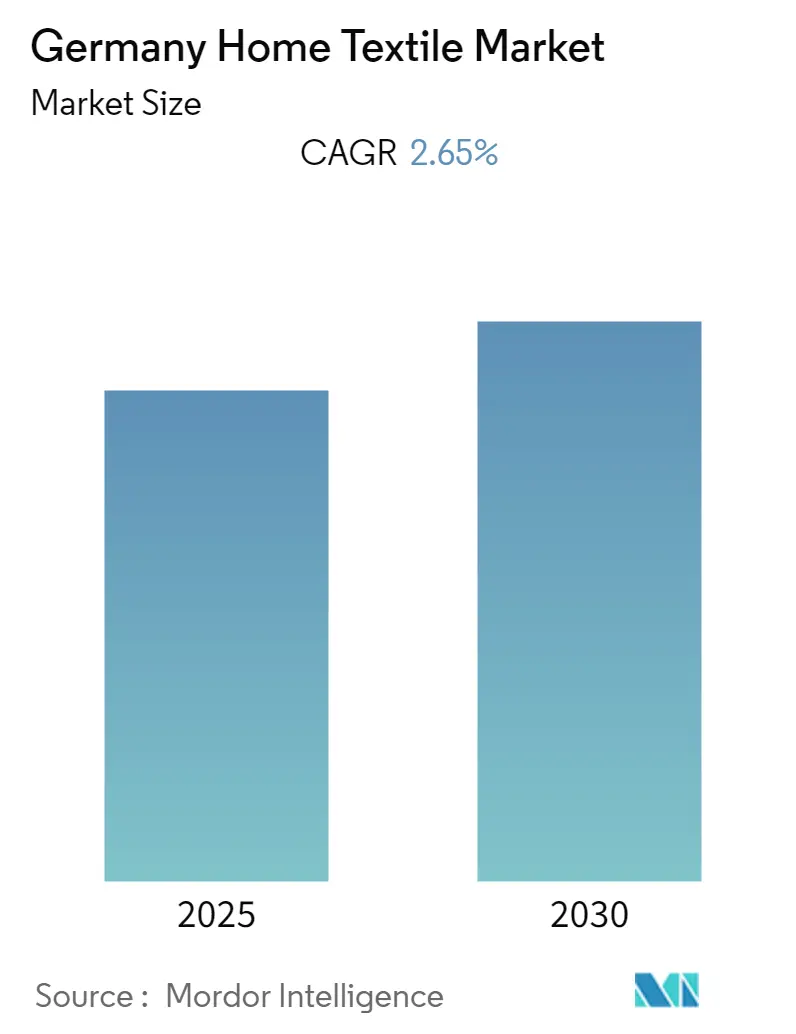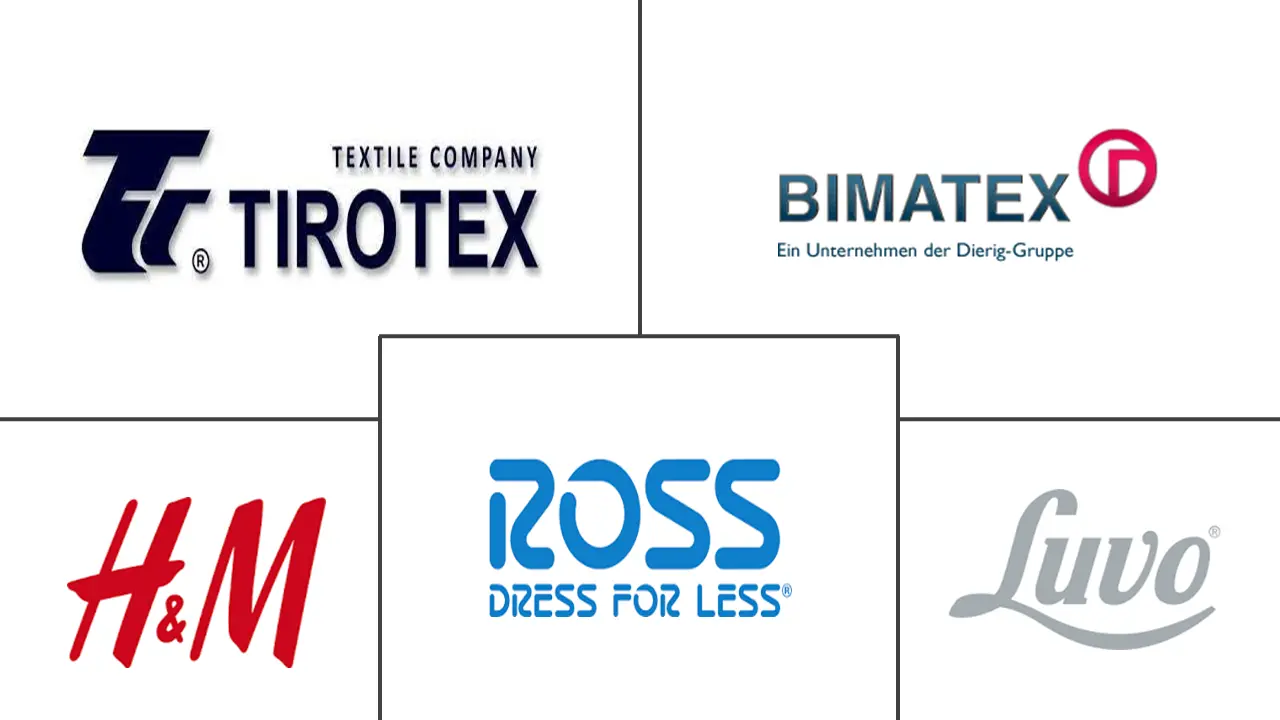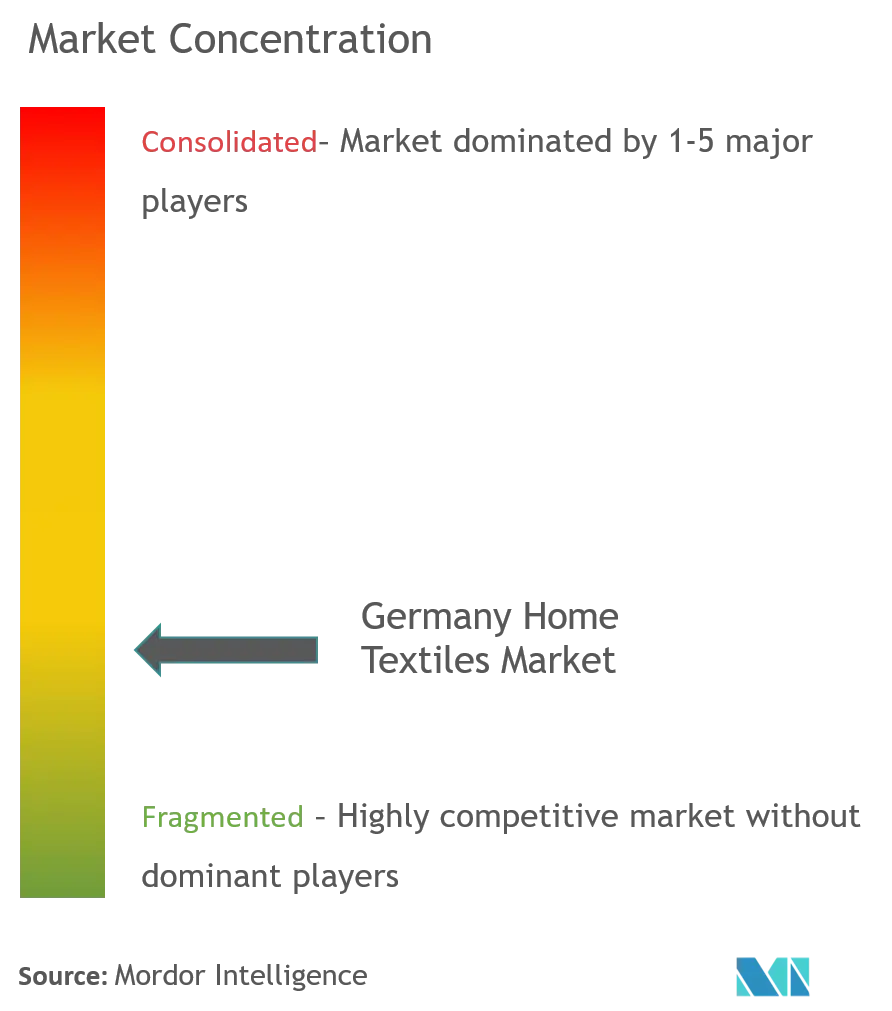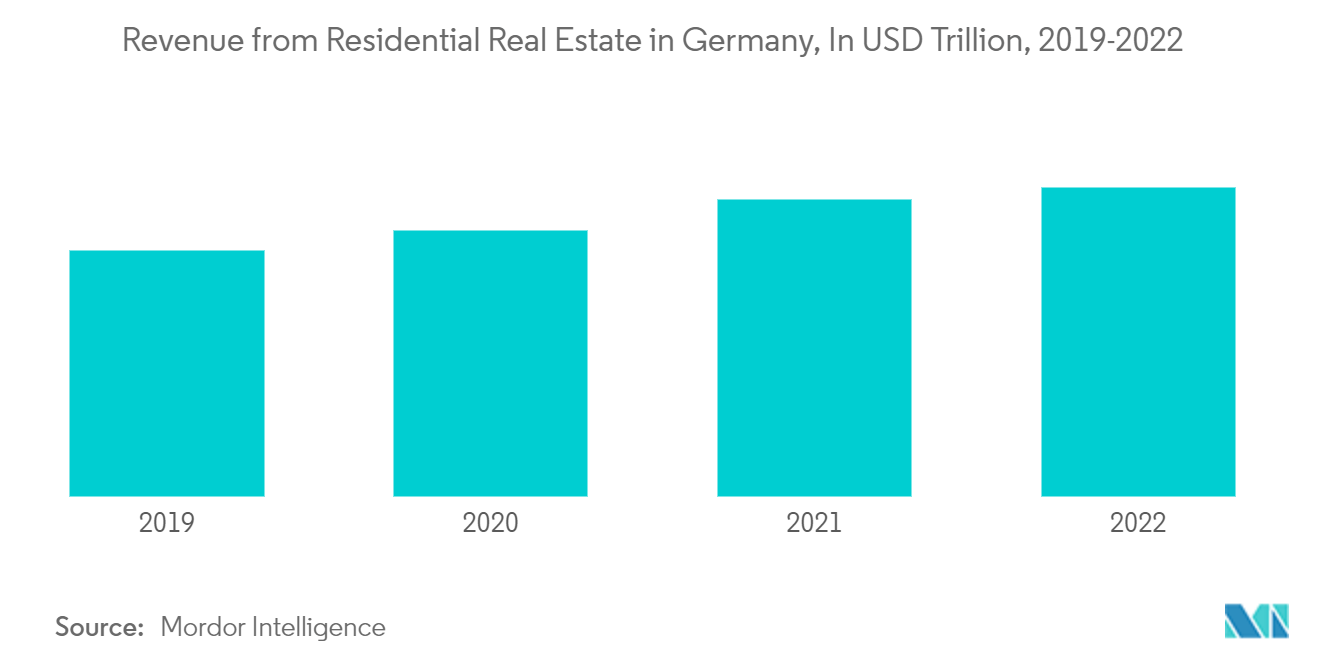
| Study Period | 2020 - 2030 |
| Base Year For Estimation | 2024 |
| Forecast Data Period | 2025 - 2030 |
| Historical Data Period | 2020 - 2023 |
| CAGR | 2.65 % |
| Market Concentration | Low |
Major Players
*Disclaimer: Major Players sorted in no particular order |
Germany Home Textile Market Analysis
The Germany Home Textile Market is expected to register a CAGR of 2.65% during the forecast period.
The outbreak of the COVID-19 pandemic had a significant impact on the home textile market in Germany, as it has on many industries worldwide. The pandemic caused disruptions in global supply chains, including the manufacturing and distribution of home textiles. Lockdown measures, factory closures, and transportation restrictions led to delays in production and delivery, impacting the availability of products. With increased time spent at home due to lockdowns and remote working arrangements, consumers' preferences for home textiles shifted. There was a greater emphasis on comfort, functionality, and practicality rather than purely aesthetic considerations. Demand for products such as bedding, mattresses, curtains, and home office accessories increased, while decorative items saw decreased demand. The pandemic increased awareness and demand for sustainable and health-conscious home textile products. Consumers became more conscious of the materials used in textiles, seeking products that are eco-friendly, hypoallergenic, and easy to clean and sanitize. Manufacturers responded by emphasizing sustainable and health-oriented features in their offerings.
Germany is one of the largest markets for home textiles in Europe. It is one of the prominent countries in Western Europe for bed, bath, and table linen consumption. Due to the increase in real private expenditure, consumer spending is increasing on home textile products in Germany. Germany is also the largest importer and exporter of home textiles in Europe. There is a rising trend for eco-friendly home textiles in Germany. Germany has traditionally led Europe's demand for organic cotton, with mail-order companies accounting for the bulk of sales in this category. The country also conducts a global trade fair known as Heimtextil for home textiles, interior design, and interior trends annually. As per the event's statistics, 31% of the visitors show interest in bed linen, 30% for textile home accessories and cushions, 23% for bathroom textiles, and 18% for bedcovers.
Germany Home Textile Market Trends
Positive Housing Market Fuels Demand for Home Textile Products
The positive housing market in Germany has indeed fueled the demand for home textile products. A thriving housing market typically leads to increased home purchases, renovations, and interior design projects, which, in turn, drives the demand for various home furnishings, including textiles. Several factors contribute to the positive housing market in Germany. Low-interest rates, stable economic conditions, and favorable government policies such as subsidies for homebuyers have encouraged individuals to invest in real estate. This has resulted in a higher number of property transactions and increased demand for home-related products.
As more people move into new homes or undertake renovation projects, the need for home textile products such as curtains, blinds, carpets, rugs, bedding, and towels also rises. Homeowners and renters alike seek to personalize and enhance their living spaces, making textiles an essential part of interior design. Moreover, the growing focus on sustainability and eco-friendly practices has influenced consumer preferences. Many individuals are now seeking home textile products made from organic or recycled materials, contributing to the overall demand for such eco-conscious offerings.
The positive housing market has also encouraged the growth of online retail platforms, making it easier for consumers to access a wide range of home textile products. Online shopping provides convenience and a greater variety of choices, further stimulating the demand for these goods. Overall, the positive housing market in Germany has created a favorable environment for the home textile industry. The increasing number of housing transactions and renovation projects, coupled with evolving consumer preferences, has resulted in a higher demand for home textile products throughout the country.
Rising Imports of Home Textiles in Germany
The rising imports of home textiles in Germany have contributed to the growth of the market. While the domestic textile industry in Germany remains strong, the increased importation of home textiles has expanded the overall market and provided several benefits. Importing home textiles from various countries increases the availability of different products in the German market. Consumers now have access to a wider range of designs, styles, and materials that may not be readily available domestically. This expanded selection contributes to market growth as it attracts more consumers and caters to their diverse preferences. Importing home textiles often allows retailers to offer products at competitive prices. Lower production and labor costs in some countries can result in cost savings, which can be passed on to consumers. The availability of affordable imported options encourages more people to purchase home textiles, further driving the market growth.
Certain countries excel in producing specific types of home textiles due to their expertise, craftsmanship, or access to unique materials. Importing these specialized products allows German consumers to access high-quality items that may not be locally produced. This diversification attracts a broader consumer base and contributes to market expansion. Importing home textiles creates opportunities for international trade partnerships and collaborations. German retailers and manufacturers can establish relationships with overseas suppliers, fostering cross-border cooperation and exchange. These partnerships can lead to mutual growth and the introduction of new products and technologies into the German market. While rising imports of home textiles in Germany have their advantages, it is important to strike a balance with supporting the domestic textile industry. Encouraging domestic production while embracing the benefits of imports can foster a robust and sustainable home textile market in Germany.

Germany Home Textile Industry Overview
The German home textile industry is highly competitive and fragmented, with some of the major players such as Tirotex, Bimatex, and H&M. The industry is primarily composed of small and medium-sized companies that, over recent decades, have seen a transformation from low-cost, high-volume production to that of high quality.
Germany Home Textile Market Leaders
-
Tirotex
-
Bimatex
-
Hennes & Mauritz AB
-
Ross
-
Luvo Textile
- *Disclaimer: Major Players sorted in no particular order

Germany Home Textile Market News
- June 2022: H & M Hennes & Mauritz AB decided to use the 2022 annual general meeting authorization to acquire the company's own B shares. This acquisition will allow the company to transfer capital to its shareholders and adjust its capital structure.
- May 2022: Tirotex recently acquired a new equipment frame from the Turkish manufacturer Dilmenler as part of its ongoing efforts to modernize its equipment and remain competitive in the international textile industry. Tirotex remains committed to its corporate policy of purchasing modern technological lines and supporting innovative development despite external circumstances.
Germany Home Textile Industry Segmentation
This report aims to provide a detailed analysis of the home textile industry in Germany. It focuses on market dynamics, technological trends, and insights into various types, applications, and process types. Also, it analyses the major players and the competitive landscape in the home textile industry. The German home Textile Market is Segmented by Product (Bed Linen, Bath Linen, Kitchen Linen, Upholstery, and Floor), and by Distribution Channel (Specialty Stores, Supermarkets and Hypermarkets, Online, and Others), and End Users (Residential and Commercial). The market sizes and forecasts are provided in terms of value (USD) for all the above segments.
| By Product | Bed Linen |
| Bath Linen | |
| Kitchen Linen | |
| Upholstery | |
| Floor | |
| By Distribution Channel | Speciality Stores |
| Supermarkets and Hypermarkets | |
| Online | |
| Other Distribution Channels | |
| By End Users | Residential |
| Commercial |
Germany Home Textile Market Research FAQs
What is the current Germany Home Textile Market size?
The Germany Home Textile Market is projected to register a CAGR of 2.65% during the forecast period (2025-2030)
Who are the key players in Germany Home Textile Market?
Tirotex, Bimatex, Hennes & Mauritz AB, Ross and Luvo Textile are the major companies operating in the Germany Home Textile Market.
What years does this Germany Home Textile Market cover?
The report covers the Germany Home Textile Market historical market size for years: 2020, 2021, 2022, 2023 and 2024. The report also forecasts the Germany Home Textile Market size for years: 2025, 2026, 2027, 2028, 2029 and 2030.
Our Best Selling Reports
Germany Home Textile Industry Report
Statistics for the 2025 Germany Home Textile market share, size and revenue growth rate, created by Mordor Intelligence™ Industry Reports. Germany Home Textile analysis includes a market forecast outlook for 2025 to 2030 and historical overview. Get a sample of this industry analysis as a free report PDF download.





